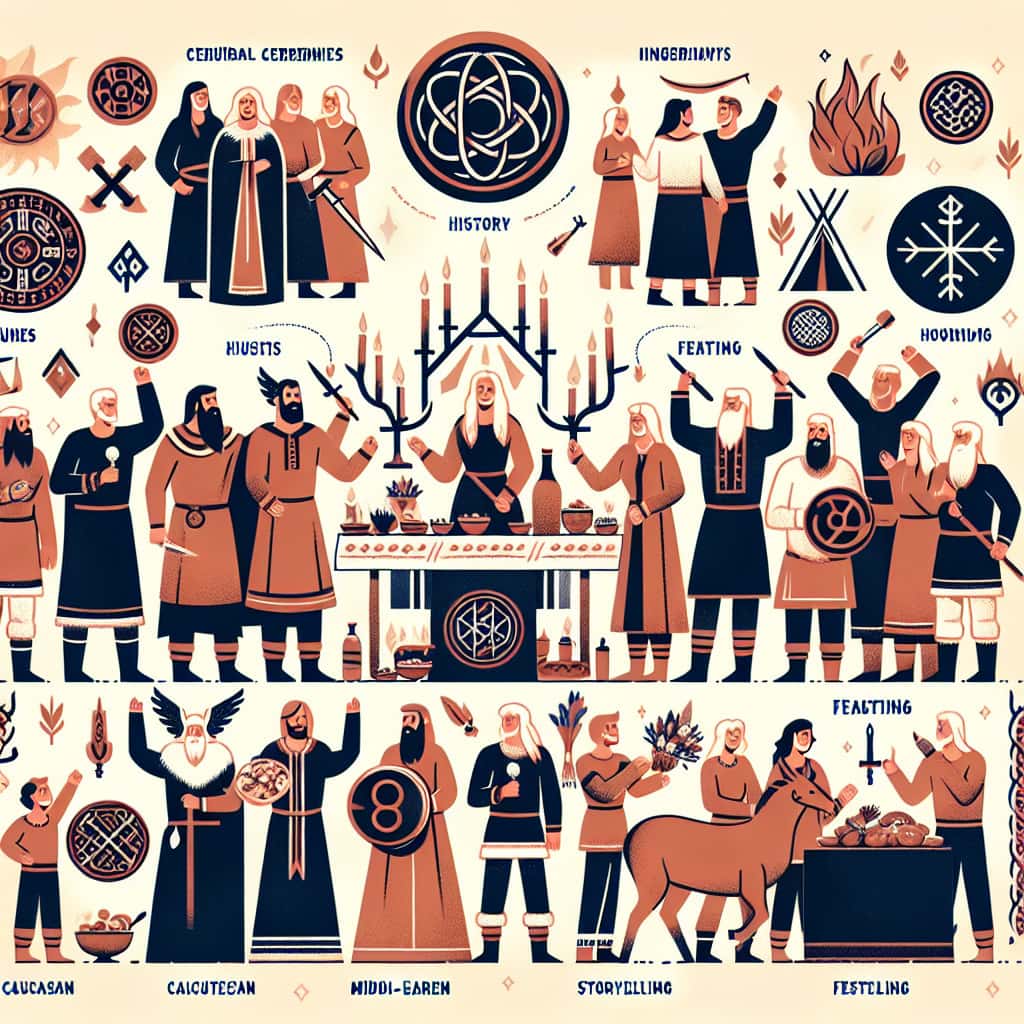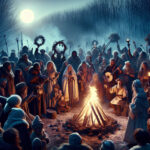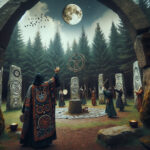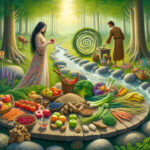As many people are probably aware, Norse Paganism is an ancient religious practice that dates back thousands of years and was primarily practiced by the Norse people of Northern Europe. Despite the fact that it is no longer a widely accepted religion, Norse Paganism still has a few holidays that are celebrated today. This article will explore the various Norse Pagan holidays, as well as provide an overview of the beliefs and traditions associated with these special days.
Norse Pagan Holidays
Norse paganism is a polytheistic faith based on ancient Norse mythology. It is a spiritual tradition that has been practiced by many people for thousands of years. As part of this tradition, Norse pagans celebrate several holidays throughout the year, each of which has its own unique meaning and purpose.
Yule
Yule is the Norse winter solstice festival and is celebrated from the evening of December 21st to January 1st. Yule is a time for giving thanks for the blessings and abundance of the past year, and for looking forward to the new year. Many Norse pagans will exchange gifts, decorate their homes with evergreens, and light a Yule log in their home to honor the turning of the year.
Ostara
Ostara is the Norse spring equinox festival and is celebrated around the 21st of March. Ostara is a time to celebrate the renewal of life and the coming of the spring. Many Norse pagans will decorate their homes with flowers, make offerings to the gods and goddesses, and host feasts and parties in honor of the season.
Midsummer
Midsummer is the Norse summer solstice festival and is celebrated around the 21st of June. Midsummer is a time of celebration and joy, and is a time to honor the gods and goddesses of fertility. Many Norse pagans will decorate their homes with flowers and banners, and light bonfires in honor of the season.
Lammas
Lammas is the Norse harvest festival and is celebrated around the 1st of August. Lammas is a time of giving thanks for the abundance of the harvest and for the blessings that have been bestowed upon us. Many Norse pagans will decorate their homes with corn stalks, fruits, and vegetables, and host feasts and celebrations in honor of the season.
Samhain
Samhain is the Norse autumn equinox festival and is celebrated around the 21st of October. Samhain is a time to honor our ancestors and to remember those who have passed on. Many Norse pagans will decorate their homes with pumpkins and other fall decorations, and host feasts and celebrations in honor of the season.
Norse pagans celebrate their holidays with a variety of rituals and celebrations. Many Norse pagans will decorate their homes with symbols of the season, make offerings to the gods and goddesses, and host feasts and parties in honor of the season. Additionally, many Norse pagans will practice divination and meditation in order to connect to the spiritual energies of the season.
Symbols
Each Norse pagan holiday has its own unique symbols and decorations. For Yule, many Norse pagans will decorate their homes with evergreens and holly, to symbolize the renewal of life. For Ostara, many Norse pagans will decorate their homes with flowers and eggs, to symbolize the coming of the spring. For Midsummer, many Norse pagans will decorate their homes with flowers and banners, to symbolize the fertility of the season. For Lammas, many Norse pagans will decorate their homes with corn stalks, fruits, and vegetables, to symbolize the abundance of the harvest. For Samhain, many Norse pagans will decorate their homes with pumpkins and other fall decorations, to symbolize the transition from life to death.
Food and Drinks
Norse pagans will often serve traditional foods and drinks to celebrate their holidays. For Yule, many Norse pagans will serve dishes such as roasted pork, fish, and baked apples. For Ostara, many Norse pagans will serve dishes such as lamb, eggs, and honey cakes. For Midsummer, many Norse pagans will serve dishes such as honey cakes, berry pies, and roasted meats. For Lammas, many Norse pagans will serve dishes such as breads, pies, and roasted meats. For Samhain, many Norse pagans will serve dishes such as roasted root vegetables, soups, and breads.
Gifts
Norse pagans also exchange gifts during their holidays. For Yule, many Norse pagans will exchange gifts such as books, jewelry, and clothing. For Ostara, many Norse pagans will exchange gifts such as seeds, flowers, and eggs. For Midsummer, many Norse pagans will exchange gifts such as tools, jewelry, and clothing. For Lammas, many Norse pagans will exchange gifts such as baked goods, crafts, and canned goods. For Samhain, many Norse pagans will exchange gifts such as candles, incense, and jewelry.
Conclusion
Norse pagan holidays are a time for celebration, reflection, and connection to the spiritual energies of the season. Each holiday has its own unique meaning and symbolism, and is celebrated with rituals, decorations, feasts, and gifts. Norse pagans will often decorate their homes with symbols of the season, make offerings to the gods and goddesses, and host feasts and celebrations in honor of the season. These holidays are an important part of the Norse pagan spiritual tradition, and are a time to give thanks to the gods and goddesses, and to honor our ancestors.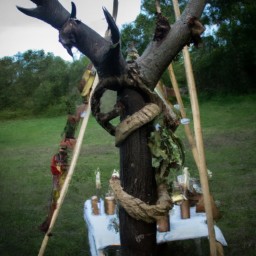
In conclusion, Norse Pagan holidays are steeped in tradition and mythology, and are still celebrated today. Celebrating these holidays can be a meaningful way to connect with the ancient Norse culture and its gods and goddesses. It is important to remember to honor the gods and goddesses in a respectful way, and to be mindful of the environment and the land. By celebrating Norse Pagan holidays, we can keep the ancient traditions alive and celebrate the Norse culture with reverence and respect.

